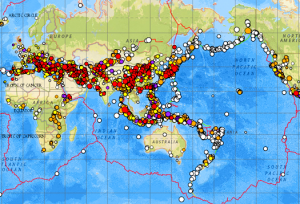
Sandy notes 1: Systems and the language of causation
Dear friends,
It's so tempting to say “Global warming caused superstorm Sandy.” And it is so easy to counter with “Storms like Sandy happen. You can't say that global warming caused a particular storm!”
Much human folly nowadays comes from believing that identifying a direct cause for some social or environmental problem tells us what we need to know to “fix” it.
Unfortunately, when we're dealing with problems in a complex system – like a society or our global climate – its causes (and “fixes”) are not simple, linear and direct. They are numerous, nonlinear, indirect, many-faceted, contextual. And they almost always include us and many aspects of our lives, individually and collectively.
So how do we talk about “causation” when we're dealing with complex systems?
In the article below, George Lakoff introduces the term “systemic causation” as an alternative to “direct causation”. Megastorm Sandy gives us good occasion to explore this new term. So what does systemic causation look like in the case of Sandy?
Human economic and energy systems work in concert with the sun to add an estimated 400,000 Hiroshima bombs of heat into the global climate system every day ( http://bit.ly/400kHiroshima ), thanks largely to our carbon emissions and the feedback dynamics they trigger. That heat, working with weather and water systems makes superstorms like Sandy much more likely. Not only superstorms, but tornadoes, floods, droughts, mega wildfires, record setting temperatures, giant hail, and other extreme weather phenomena, as well strange climate-related disorders in crops, forests, oceans, insects, wildlife, glaciers, populations, economies…







